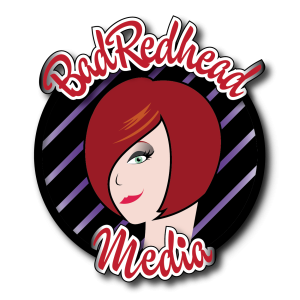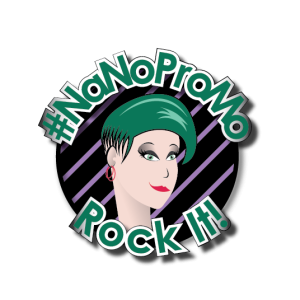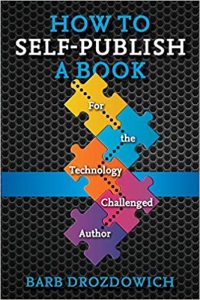How to Improve Your Email Newsletters Right Now by Guest @SugarbeatBC
All the experts these days seem to focus on “growing your list,” as part of your author platform. That’s the primary message – bigger and bigger numbers seem to be the most important thing. How many email addresses can you gather up to proudly show off?
Is this accumulation of numbers of readers an exercise in hoarding or are numbers really the most important aspect of communicating with readers? Or are there more important aspects to this whole science of “communicating with readers?”
The short answer to that question is yes!!
Many of the experts in the field focus on aspects of this communication which in the big picture don’t really matter. Or in some instances are detrimental to your ability to communicate with readers. In fact, it is my assertion that many of the experts in the field haven’t actually read any of the research in the field of communication with readers. They often repeat advice from others – assuming if someone is talking a good game, they must know what they are talking about.
In today’s post, we are going to mention two points of proven research and then talk about some ways to harness the power of that research to up your game.
- Researchers – especially those focused on education – have been studying how people read (and learn from) content on electronic sources since before I finished university. In other words, there is a huge body of research starting well before we had the internet available in our homes. This research has to do with not only how people read emails and electronic books, but also how well they comprehend and retain information gleaned from such sources.I could go on at length about all this science, but in this post, I want to focus on tips and tricks – so I’ll direct you here to a free video on the subject and a couple of downloadables.
- Research tells us that happy readers are more responsive and responsiveness is the guiding factor for your success in communicating with readers. Not only do responsive readers buy more books, but they open and click on more newsletters which helps with sending reputation.
Let’s talk about some basic, common sense strategies to improve your communications with readers using newsletters.
- Educating Your Readers
- Insisting on the Double Opt-In
- Sending Your Note from a Newsletter Service Provider
- Sending All Notes with Authentication
- Carefully Choosing Your Subject Line
- Creating Content
- Sending Email to Low-Open Rate Lists
- Creating Your Content Within Your Email Marketing Service’s Program Editor
Educating Your Readers
Many experts in the field feel readers are a skittish bunch. They will suggest you only ask your subscribers for their email address. They say: “Don’t worry about their first or last name or do any kind of questioning when they’re signing up. It might confuse them. It will give them a chance to back away.” I don’t disagree to a certain extent. But honestly, we want to have readers on our mailing list who want to be there; who are interested in our work or what we have to say, and obviously, we want them to buy our books.
I want to be clear with my subscribers what they are going to get from me and how often they are going to get it. I want somebody to realize what I’m going to send before I send it. If this isn’t something that they’re interested in, I encourage them to unsubscribe. I welcome all my subscribers to my various groups or lists with a welcome note, and I encourage them to include my email address or my return address in their contacts list on their email program as this will help my newsletters get delivered.
Insisting on the Double Opt-In
We touched on double opt-in in the previous point. I can’t stress this enough. The double opt-in process also protects your lists from spambots, as the spambots won’t complete the process by clicking on the confirmation note.
I hear from many authors who are frustrated with the double opt-in process. There are a number of problems that authors need to field when using this process. The first and foremost is that most email marketing services won’t allow an email address to be subscribed to more than once. This is a handy safeguard that prevents duplication. However handy it is, most sign-up forms will allow somebody to enter an email address, and then return a standard confirmation message.
If this message hasn’t been customized, the confirmation note is often not very helpful. Even most custom messages will typically direct subscribers to look at their inbox for a confirmation note. It won’t say anything about the fact that if you have already subscribed, you won’t get a note.
- I’ve witnessed people trying time after time after time to sign up for mailing lists, frustrated that they aren’t getting a confirmation note, commonly claiming the sign-up form is broken. It isn’t; it’s working as it’s supposed to, but obviously, subscribers can forget which lists that they’ve signed up for.
- The other problem that can happen is that the confirmation note goes to spam. We always hope that that doesn’t happen right off the bat. It sets a bad precedent.
- Add to that some people’s email service providers will automatically cull email that is considered to be spam and they never actually see it.
Work to educate readers who choose to subscribe to your newsletter. Customize the notes and messages to be as helpful as possible and send a welcome note to confirm success in being added and set expectations.
Sending Your Note from a Newsletter Service Provider
This should be an obvious point, but some will resist. They will feel that Gmail will work just fine, or they don’t want to spend money on a service before their writing is making money. Using a newsletter service provider will communicate to your readers that you’re conducting yourself in a professional manner, and this service will do everything in its power to keep your notes from ending up in spam folders
Sending All Notes with Authentication
There are two different kinds of authentication that your newsletter can be sent with.
The first one is the salutation. All email marketing services will allow you to send newsletters addressed at least to the first name of the person whose email address the note is going to. In order to do that, you need to have actually asked for the person’s first name when you collect their information. As we’ve talked about in previous sections, addressing an email or a newsletter to the person by name sends a signal to the recipient’s email provider that you know this person – that you belong.
Secondly, email marketing services have technical ways to authenticate or verify emails that normal email providers don’t have access to. It’s like an invisible ink stamp on your email that can only be read by the recipient’s email program but isn’t actually visible to your readers.
Carefully Choosing Your Subject Line
The topic of a subject line could (and is) the topic of entire books. I’ll use this section to summarize.
The subject line and the email address that the newsletter is from are possibly the only things that your recipients see. And they make a decision to open your newsletter based on those two pieces of information. I do realize that some people have an email program that shows them a preview pane of some sort and they may be able to scroll through more of your email, but we can’t assume who has access to this technology.
Email programs are responsive. If a recipient repeatedly deletes an email from you without reading it, your deliverability will start to decrease. Not necessarily your overall delivery but your delivery to this person. The email program will get the message that this person doesn’t want to see emails from you and will send them directly to the spam or a junk folder or after a while perhaps, bounce them back to the sender.
There are no black and white rules when it comes to subject lines as every email program will respond a bit differently. I can point out a few common sense no-no’s like using all caps, multiple exclamation points, excessive punctuation. However, there isn’t one deal-breaker for newsletter delivery.
Keep in mind that depending on which email program/app your readers use, they may only see as few as 90 characters of the subject line. Use those characters to entice your readers to open your note!
Creating Content
Content, like subject lines, is a combination of art and science. Thinking back to what you learned from the video of “The Science of Writing for Readers,” you’ll realize that great content is a mix of headlines, paragraph text, and graphics creating something that is scannable. Putting all the content of a newsletter on a graphic is a well-known trick of spammers – so don’t do that. Having content which is all text is equally bad.
Modern spam filters are more about reputation than content, but sending out a newsletter like that is simply asking for trouble. What you do want to do is to have a note that has an appropriate ratio of images to text. Experts say that the human brain can absorb information in an image much faster than it can a representative amount of text. And, let’s face it, the images make the newsletter more visually attractive.
Although some email programs don’t automatically load pictures, make sure you encourage your readers to click to load pictures and let them know what they are missing by using the alt text field for each and every picture. Remember your book covers are part of your sales devices – use them!
I’ve heard some experts claim that including pictures interferes with the delivery rate of a newsletter. There is no science to back up that claim. There is science to back up how positively readers respond to pictures – so follow the science and include some pictures!
Lastly, make sure every note includes a call to action. Ask for purchases, ask readers to share your newsletters with their friends. Include little share buttons. All these things help.
Sending Emails to Low-Open Rate Lists
In order for your readers to get your newsletters, you need to get your note by the email program’s firewall. These firewalls talk to one another and will gossip if your newsletter is deleted before being read. If this is a pattern with your readers, email firewalls will gossip and spread the word. Eventually, your ability to communicate with readers will decrease because your sending reputation is bad.
What the various newsletter services describe as a “Market average” open rate is actually a pretty crappy rate. You should be aiming much higher than the 17 or 18% they may claim is the “average.”
Think about it – if email programs are aware only 18% of your readers bother to read your notes, that means that 82% don’t. Clearly, your ability to successfully send notes is in question.
The easiest way to avoid this is to send out notes or newsletters that resonate with your readers – not what copywriters say is “Gold medal swipe copy.” Your readers are unique and they like your work for a reason – don’t treat them as clones. Give them something to click on that is appropriate for them – buy links for more than AmazonUS, etc
Creating Your Content Within Your Email Marketing Service’s Program Editor
One of the worst things that you can do when creating a newsletter is to create that newsletter in Word and copy and paste it over to the template in your email marketing service.
Most authors are pretty comfortable working in Word. I understand that comfort. If this is how you’re going to create your newsletters, you will need to pass the content (e.g., the text) through a TextEdit program, before pasting it into the forming newsletter. This will remove the extra HTML coding that could be seen as sketchy to spam filters.
I hope that these tips and tricks are things you can put into practice. Remember, your readers have joined your mailing list because they like your work. Treat them well and they will continue to respond positively.
Good luck with your newsletters and your communications with readers! For more information don’t hesitate to drop by my blog where I regularly post tips and tricks applicable to authors.
“
How to Self-Publish a Book by Barb Drozdowich
“An in-depth, perfect guide for every beginning author – a must read!”
Mimi Barbour,USA Today & NY Times Bestselling Author
rocket
THE GIVEAWAY
One free course ($100 value) and winners choice of Barb’s helpful books!
Want to win this giveaway? Simply leave a comment WHY below!
All comments must be left prior to midnight on Monday, May 20th, 2019 in order to be eligible to win. Winners for the week announced on Tuesday, May 21st.
Good luck!
Barb Drozdowich
My name is Barb Drozdowich and I’m the author of seven books so far and several more are in the works. My day job is helping authors with their blogs and all things social media. I use normal everyday language and try to help people understand how to use the new tools of today’s world of publishing – Blogs, Facebook, Twitter, Pinterest, Goodreads, etc.
I’m patient and I have upwards of two decades of teaching under my belt. I’m comfortable with technology, and I’m a voracious reader. I live in awe of those of you who create the magical stories that I read every day. If you are trying to wade through the technology swamp and are getting bogged down, drop me a line and we can chat.
Have you signed up for my newsletter yet?







I’ll admit, I skimmed over the blog post and read the highlights. However, I’m book marking this to go back to once I set up my own newsletter as it looks like it has some excellent information. Thank you, Barb for taking the time to not only share the information with us, but to do so in such an organized fashion.
I’ve been hesitant about starting a newsletter, thinking, who would want to read it? But, the more I get into the writing business, the more I realize a newsletter may be essential to building my career.
Thank you for the tips!
As many point out – there is an intimacy about communicating via email/newsletter that can’t be achieved in other ways.
Barb
Useful post, Barb. I obviously need your course as I freaked by what you say about putting text from Word through a text editor! Don’t really understand what this means.
My newsletter has a high open rate but low click through, I suspect because it’s mainly people who have bought my books and will probably buy the next but aren’t particularly interested in the stuff in between. (I write literary fiction so books come out at roughly 18 month intervals.)
Another question: are videos a no-no? I have assumed they might block up some inboxes.
Yup – videos are stripped out by many email providers.
Barb
Great, detailed blog. I’ve not got the biggest list (and it’s easy to feel bad about that with all the noise) but I’m actually pleased my open and click through rates are very good based on what you indicate. I do feel I could do even more/ better though so following. Thanks!
You hit on so many great points that I am trying to get my arts group to understand – they are afraid to put all email addresses in “one” program, and then they can’t segment their list for other reason. I’m workin’ on it! Any help getting my group moving would be fabulous!
Totally understand and with the most recent changes in MailChimp there will be a whole bunch of upheaval yet again. I also volunteer with an arts group and even getting them to understand they need to use a service is like pulling teeth…
Barb
Definitely, something I struggle with, though of course, it would help if someone signed up in the first place! Would love to win this, as I’m trying to learn a lot about it. 🙂
Barb,
Wow! What a thoroughly detailed post. Like Sarah, I do not have a newsletter but have bookmarked your guest post for future reference for myself and author pals.
Thank you!
Donna
I think you’ve covered some important points about getting started with an online newsletter. It’s essential but, for a lot of people, also easy to put as a low priority. I’ve heard authors say the few words of a welcome email are harder to write than the thousands of words in their WIPs. Part of this, I think, is lack of familiarity with what’s needed. Articles like yours will help to change that, and I thank you for writing it.
Sincerely,
Dana Lemaster
Hi Dana,
I agree – newsletters are WAY harder to deal with than writing an entire book 🙂
Barb
Fantastic post and certainly need to implement some of these points. Jen
Fantastic post. Had no idea about copying/pasting into my email template from Word! Also love what you said about great content being a combo of art and science. Truth! Would love to win the giveaway as I’m working hard to improve my newsletter and build my audience. Thanks for the opportunity 🙂
Great advice! I have a list that I am constantly trying to improve, from the signup page to the messages I send out each month. Would love to win to improve my game even more!
Like Sarah, I skipped over it, a lot of it because I felt I was reading a point and then it would drift into a totally different point. E-Mail Newsletters are supposedly necessary but to be honest I’ve come to the realization that I haven’t been doing it right and have no clue what goes into an e-mail list. Also confused on the scheduling of how often one should post a newsletter. You stay the basics but then you get into all the technical aspects of it and I get it but at the same time I don’t. Well written article just a bit too wordy and technical for me.
The newsletter is something I’m working on doing consistently. It just takes time, but it’s invaluable. This was a good reminder to get one going.
Oh boy. I knew I was getting the newsletter thing wrong. I came late to the whole idea of NLs, right on the heels of the GDPR thing and I sort of threw my hands up in the air. I have fewer NL members than I do subscribers to my blog, so it’s hard sometimes when I send out a NL not to feel a bit like Noah releasing doves from the Ark in hopes of getting some evidence of dry land out there.
I also have a hard time knowing what to put in my NL and how often to send one. I just don’t have that much news to share that often! And while I like blogging, I find putting together a NL frustrating. Probably because I had to teach myself everything and I’m probably missing some easy shortcuts. Personalize your emails? Heck. I’m going to have to sit down with someone to figure out how to do that…
Hi McKenna,
I hear you! Newsletters are a different animal than blogging. You will get into a groove, though…
Barb
Hmm, I got rid of my double opt-in some time ago but I see now I need to re-think that! I’ve been having “fun” weeding out spammy email addresses but hadn’t made the connection that the double opt-in would solve that…